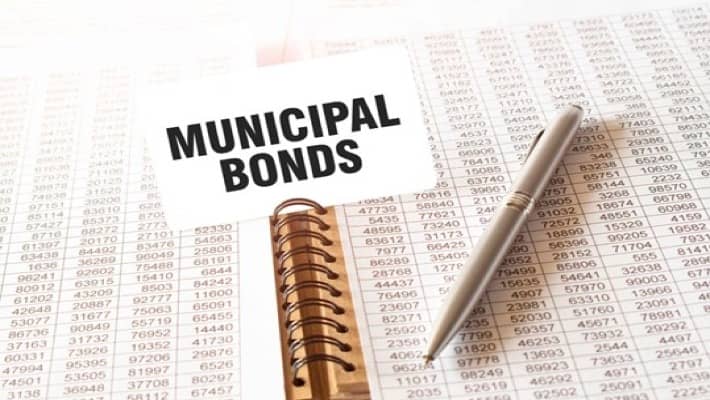Monday Nov 27 2023 09:19

10 min

Investors and traders looking to build a well-rounded investment portfolio often turn to bonds. Bonds play an important role in balancing the risks and returns of stock investments.
Learn how bonds can help your capital grow, how you can decide how much to invest in, and which bonds are the best picks.
One of the primary appeals of financial bonds is that they provide regular interest payments to investors and traders. The size of interest payments depends on the bond’s stated interest rate, also known as the coupon rate.
The coupon rate is fixed when the bond is issued and represents the annual interest payment to the bondholder. Typically, it’s expressed as a percentage of the bond’s face value. The actual interest payment is calculated by multiplying the bond’s face value by the coupon rate.
Corporate and municipal bonds typically offer higher yields than US Treasury bonds but with commensurately higher credit risk. High-yield bonds provide substantial income but with a greater risk of default. The appropriate amount of income-generating bonds depends on an investor’s risk tolerance and income needs.
In addition to income, bonds offer more price stability than stocks. While stocks can experience significant short-term volatility, high-quality bonds tend to fluctuate far less in price. Large daily price swings are uncommon in the bond market.
This relative stability can boost equity investments that regularly experience larger ups and downs. Bonds function as a steadying force in a portfolio, helping smooth out overall returns. This lets investors better adhere to their long-term strategy during periods of stock market turbulence.
Certificates of deposit offered by banks and money market funds are other options for stability-focused investors. However, bonds can provide higher returns than these ultra-safe cash equivalents. As such, bonds offer a balance of modest income and reliability that stocks alone cannot match.
Owning multiple asset classes that perform differently under various market conditions reduces a portfolio’s overall risk. This is the rationale behind diversification. Bonds offer returns with low correlations to stocks and real estate, making them an excellent portfolio diversifier.
When stocks sell off sharply, bonds often rally as investors shift money to safe havens. For example, in the first quarter of 2020, at the outset of the COVID-19 pandemic, the S&P 500, a trade index tracking the stock performance of largest companies in the US, plunged 20% while long-term US Treasury bonds gained close to 10%.
This inverse relationship helps cushion the blow to an overall portfolio when stocks fall.
Bond prices also tend to climb when interest rates are falling. By contrast, stocks do not always move in the same direction as interest rate changes. So, incorporating bonds into a stock-heavy portfolio provides true diversification.
The bond allocation needed for effective diversification depends on an investor’s risk tolerance. Conservative investors may hold a higher percentage in bonds, while more aggressive investors require a smaller allocation. However, maintaining some bond exposure is usually advisable.

The ability to quickly access invested funds without losing principal is another helpful quality of bonds. Savings accounts and money market funds also offer liquidity. However, bonds provide greater income than cash instruments while allowing investors to raise money in a pinch.
Selling bonds does involve price fluctuations that may result in losses, unlike pure cash instruments. But bonds offer superior liquidity relative to assets like commodities, property, or structured products with limited secondary markets.
Bond ladders with staggered 1-3 year maturities provide ready cash inflows from regular principal repayments. Income investors can selectively liquidate specific bonds to fund large periodic outlays without disturbing the rest of their portfolios.
Younger investors with time on their side can usually tolerate more risk and, by extension, own fewer bonds. Older pre-retirees or retirees require more significant income and capital preservation, necessitating a higher bond allocation. Conservative investors also often favour a heavier bond weighting compared to aggressive investors.
But even small bond positions of 10-20% can help manage risk in an otherwise all-stock portfolio. Larger bond stakes of 40% or more substantially decrease the chances of steep portfolio losses during market downturns.
Holding US Treasury Inflation-Protected Secu
rities (TIPS) mitigates inflation risk for a portfolio. Floating-rate bonds reduce interest rate risk. Corporate and municipal bonds provide geographic risk diversification.
Owning bonds from several different issuers avoids overexposure to a single entity. Ensuring bonds have staggered maturities over multiple years also smoothes out interest rate risk. Properly constructed bond allocations manage numerous portfolio risks.
The ideal bond allocation depends on an investor’s age and time frame. While there are no hard and fast rules, guidelines can help prepare proper bond exposure.
Many financial planners suggest subtracting your age from 110 to determine your stock allocation percentage. The remainder would go to bonds. For example, a 40-year-old would aim for around 70% stocks and 30% bonds under this formula.
As investors move closer to retirement, their timeframe shortens. Preserving capital and managing risk becomes more imperative. Older investors nearing retirement shift a mix to bonds, like 50/50 or 60/40 stock/bond splits.
Target date funds automatically reduce stock exposure in favour of bonds as the target retirement year approaches. While not perfect for everyone, target date allocations can provide reasonable starting points.
While the “age in bonds” guideline provides a simple starting point, investors should also consider overall ranges for bond allocations. Most financial planners suggest keeping bonds within targeted brackets:
Fine-tuning within these wide bands depends on your situation. Even aggressive portfolios benefit from some portion in bonds to smooth out the trade. Conservative allocations still require sufficient stock exposure for growth.
Revisit your bond allocation at least annually or when life circumstances change. Major events like retirement, divorce, and inheritance alter time horizons and risk capacity. So, adjust your fixed income weighting accordingly over time.
High-quality bonds can enhance portfolio diversification and risk management. Let’s discuss some of the best bond options to fulfil specific roles:
Backed by the full faith and credit of the US government, Treasury bonds are considered the safest bonds available. They offer the lowest risk of default along with interest payments exempt from state and local taxes.
Treasuries make ideal core portfolio holdings for stability and principal protection. In particular, Treasury Inflation-Protected Securities (TIPS) provide inflation hedging by adjusting the principal based on the consumer price index (CPI).
Long-term Treasuries can experience price volatility from interest rate changes. But overall, Treasury bonds offer unparalleled safety for conservative fixed-income investors and traders. They provide reliable portfolio diversification.
Corporate debt issued by strong companies with ratings of BBB and higher from Standard & Poor’s offers a sweet spot between safety and income. Issuers aim for “investment-grade” ratings to attract bond buyers.
Top-rated firms like Apple, Microsoft, and Johnson & Johnson offer corporate bonds yielding more than comparable Treasuries. This “spread” compensates for the greater risk relative to guaranteed government bonds.

Municipal bonds finance public projects like roads, schools, utilities, and hospitals. Issued by states, cities, and counties, “munis” pay interest-free from federal and sometimes state taxes.
This tax advantage can make munis attractive for taxable accounts.
General obligation munis backed by local tax revenue carry high credit ratings and low default risk. Revenue bonds tied to public works projects are riskier but offer higher yields.
Fewer pricing inefficiencies exist in the municipal market than decades ago. Yet opportunities remain for savvy individual muni investors. Bond funds also conveniently provide exposure to this tax-friendly sector.
Bonds help in managing risks and diversifying equity market exposure. High-quality government and corporate bonds generate steady income while providing stability during periods of stock volatility.
Target date funds provide appropriate bond allocations that evolve over an investor’s timeframe. Beyond such funds, guidelines suggest maintaining 10-30% in bonds for aggressive investors and up to 50-70% for conservative investors. Within these ranges, investors can fine-tune fixed-income exposures based on individual circumstances.
Revisiting your portfolio’s bond allocation at least annually ensures your investment mix aligns with your risk appetite and objectives. As with any investment, understand the risks and characteristics before trading bonds. Bonds, when used wisely, can help investors and traders achieve long-term portfolio growth.
You can trade bonds through a contract for difference (CFD). In this type of trading, you will be speculating the price of your chosen CFD bonds without having an actual asset.
We also offer a demo account so you can experiment freely and gain confidence before diving into real trading. This feature allows you to familiarise yourself with the platform’s functionalities and test trading strategies without any financial risk. It’s a great opportunity for both beginners and experienced traders to get a feel for the platform’s interface and tools.
Ready to trade with markets.com? Creating an account is easy.
Join our trading community and access a cutting-edge trading platform.
When considering “CFD Bonds” for trading and price predictions, remember that trading CFDs involves a significant degree of risk and could result in capital loss. Past performance is not indicative of any future results. This information is provided for informative purposes only and should not be construed to be investment advice.”
Asset List
View Full ListLatest
View all
Thursday, 17 April 2025

7 min

Thursday, 17 April 2025

6 min

Wednesday, 16 April 2025

5 min